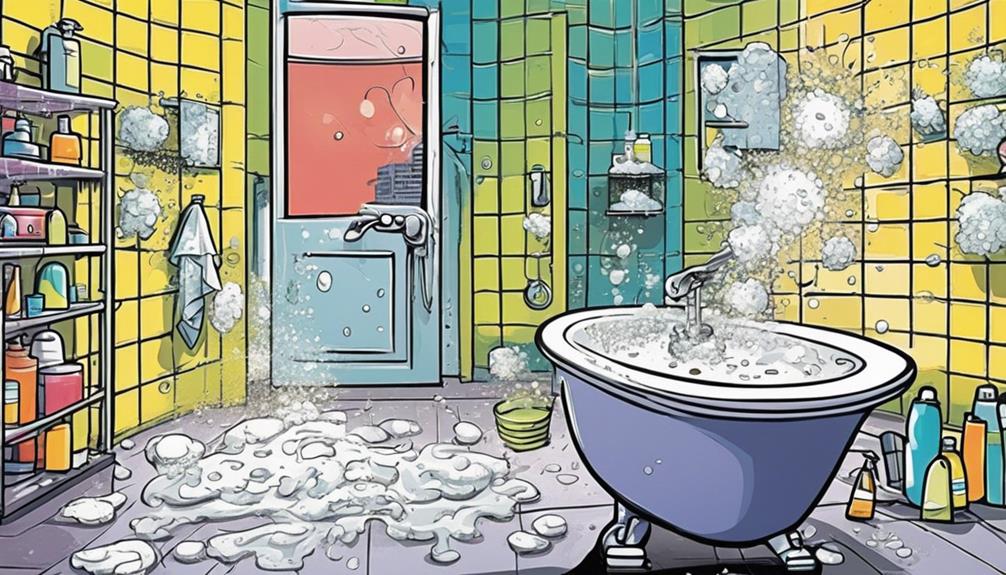I’ve found that the best central vacuum kits for DIY installation combine easy setup with powerful cleaning. The OVO Central Vacuum Carpet Deluxe Kit stands out with its versatile tools, while the Central Vac Electric Installation Kit includes everything needed for a seamless setup. The Replacement Part for Built-in 90-Degree Sweep Elbow guarantees compatibility, and the Complete Set of Fittings simplifies installation. With the right choices, you can make your home cleaning efficient and effortless. Discover more options to elevate your cleaning experience!
Key Takeaways
- Look for kits with clear instructions and comprehensive support materials for easy DIY installation.
- Ensure compatibility of components like inlets, pipes, and fittings with your existing setup for seamless integration.
- Select a system that provides adequate coverage based on your home size and layout, considering hose length and inlet placement.
- Invest in high-quality materials to enhance durability and reduce maintenance costs over time.
- Consider additional features like included cleaning tools and user-friendly designs to improve overall performance and convenience.
OVO Central Vacuum Carpet Deluxe Kit
If you’re looking for a versatile vacuum solution that works seamlessly on both carpets and hard floors, the OVO Central Vacuum Carpet Deluxe Kit might be just what you need. With a 35ft lightweight hose and dual voltage switch, it offers powerful suction and flexibility. The electric carpet beater adjusts to six height settings, while the premium floor brush is gentle on hard surfaces. I appreciate the included dusting and upholstery tools for thorough cleaning. Although some users mention the hose can kink, the overall performance and ease of use make this kit a reliable choice for my cleaning needs.
Best For: Individuals seeking an efficient and versatile vacuum solution for both carpets and hard floors.
Pros:
- Powerful suction and adjustable height settings for effective cleaning on various surfaces.
- Lightweight and flexible hose provides ease of use and maneuverability.
- Includes a variety of tools for comprehensive cleaning, including dusting and upholstery attachments.
Cons:
- The hose may kink if not handled carefully, potentially affecting performance.
- Some users feel the lightweight construction gives a perception of cheapness.
- Limited effectiveness of the carpet beater on certain small particles and specific carpet types.
Central Vac Electric Installation Kit (3), 80 ft. of Pipe
The Central Vac Electric Installation Kit (3), with its 80 feet of pipe, is an excellent choice for homeowners looking to install a central vacuum system efficiently. This kit includes everything you need, like 16 five-foot pipe sections and various elbows, making installation straightforward. I found it compatible with Hayden 1760 inlets and direct connect hoses. You’ll want to plan your outlet placements wisely to maximize suction. While I appreciated the included components, extra pipe straps might be necessary for larger setups. Overall, this kit delivers great performance and simplifies the installation process, making it a top pick for DIY enthusiasts.
Best For: Homeowners looking for a comprehensive and efficient solution to install a central vacuum system in their residences.
Pros:
- Simplifies installation with all necessary components included.
- Compatible with Hayden 1760 inlets and direct connect hoses for versatility.
- Positive user feedback on performance and suction effectiveness.
Cons:
- May require additional pipe straps and elbows for larger setups.
- Some users suggest clearer instructions for outlet installation.
- Modifications may be needed for certain outlet placements, which can complicate the setup.
Replacement Part for Built-in 90-Degree Sweep Elbow for Central Vacuum
Looking for a reliable replacement part for your central vacuum system? The built-in white 90-degree sweep elbow, part number CP-765510W, is just what you need. It’s compatible with various central vacuum models and made from durable materials like PVC and HDPE, ensuring longevity and safety. Weighing only 2.39 ounces and measuring 3 x 3 x 3 inches, it’s easy to install without batteries required. Manufactured by Edgerr, this part has a strong customer rating of 4.5 stars. Plus, Amazon offers a 30-day return guarantee, so you can shop confidently. Keep your vacuum running smoothly with this essential replacement!
Best For: Homeowners looking to maintain or upgrade their central vacuum systems with a reliable replacement part.
Pros:
- Durable materials: Constructed from high-quality PVC and HDPE for long-lasting performance.
- Easy installation: Simple to install without the need for batteries, making it user-friendly.
- Positive reviews: Strong customer rating of 4.5 stars from 11 reviews indicates satisfaction among users.
Cons:
- Limited compatibility: Only suitable for models that specifically require a 90-degree sweep elbow.
- Weight: At 2.39 ounces, it may feel lightweight and less substantial to some users.
- Availability: As a newer product, it may not be as widely available in all retail locations.
Central Vacuum Cleaner Installation Set for 3 Suction Boxes
For homeowners or small business owners enthusiastic to tackle a central vacuum installation on their own, the Central Vacuum Cleaner Installation Set for 3 Suction Boxes is an excellent choice. This extensive kit includes three suction cans, 13 vacuum pipes, and various bends and connectors, making it perfect for setting up an independent pipe system. The round lids and mounting frames ensure stability and proper sealing. With all necessary components included, I found this set simplifies the installation process, allowing for an efficient and secure setup in both residential and commercial spaces. It’s a fantastic option for DIYers like me!
Best For: Homeowners or small business owners looking for a DIY solution to install a central vacuum system efficiently.
Pros:
- Comprehensive kit includes all necessary components for installation, simplifying the process for DIY enthusiasts.
- Designed for both residential and commercial spaces, ensuring versatility in use.
- The inclusion of various bends and connectors allows for flexible installation options.
Cons:
- May require prior plumbing or installation knowledge for optimal setup.
- Limited to three suction boxes, which might not be sufficient for larger spaces.
- Adhesive may need additional time to cure, potentially delaying the installation process.
OVO Complete Set of Fittings for Central Vacuum Installation
If you’re setting up a central vacuum system and need a dependable installation kit, the OVO Complete Set of Fittings is an excellent choice. This kit features three universal wall inlets, each with low-voltage connections, making it compatible with all central vacuum brands that use a 2-inch outer diameter PVC piping network. You’ll find everything you need for a smooth installation, including inlet brackets, fittings, wires, and cement. Plus, the included accessories ensure secure mounting and proper connections. Trust me, this exhaustive set simplifies the installation process and gets you vacuuming efficiently in no time!
Best For: Homeowners looking to install a central vacuum system with a reliable and complete set of fittings.
Pros:
- Compatible with all central vacuum brands using a 2-inch outer diameter PVC piping network.
- Includes all necessary components for installation, such as wall inlets, brackets, fittings, wires, and cement.
- Simplifies the installation process, allowing for efficient setup and immediate use of the vacuum system.
Cons:
- Excludes pipes, which must be purchased separately for installation.
- Limited to low-voltage connections, which may not suit all central vacuum systems.
- Installation may require some DIY knowledge, potentially challenging for inexperienced users.
Factors to Consider When Choosing Central Vacuum Kits for DIY Installation

When I’m choosing a central vacuum kit for DIY installation, I always consider a few key factors. I look for simplicity in installation, how compatible the components are, and the coverage area to make sure it fits my home. Performance efficiency and cost-effectiveness are also vital, as I want a system that works well without breaking the bank.
Installation Simplicity
Choosing the right central vacuum kit can be a breeze, especially when you prioritize installation simplicity. I always look for kits with clear, step-by-step instructions that guide me through the setup process effortlessly. It’s a huge plus if the kit includes all necessary components like pipes, fittings, inlets, and mounting hardware—this way, I won’t be scrambling for additional purchases later. I also prefer kits with pre-measured and labeled parts, as they make assembly straightforward and minimize confusion. Comprehensive support materials, like manuals or online guides, are invaluable for troubleshooting. Lastly, opting for modular or flexible components allows me to adapt the system easily to different home layouts and access points. This makes installation a lot less intimidating!
Component Compatibility
How can I guarantee that all the components in my central vacuum kit work seamlessly together? First, I make sure that the inlets, pipes, and fittings match the specific diameter and connection types of my system. It’s essential to verify that the low-voltage wiring and electrical connections align with my system’s requirements for effective control and power distribution. I also check if the installation kit includes all necessary adapters for different brands. Material compatibility is key, so I confirm whether I’m using PVC or stainless steel to ensure durability. Finally, I review product specifications to ensure the component sizes and connection standards fit perfectly with my existing vacuum setup. This careful selection makes all the difference!
Coverage Area Considerations
Understanding your home’s coverage area is essential for selecting the right central vacuum kit, as it directly impacts cleaning efficiency. First, I recommend determining your total square footage to guarantee the system has adequate power and capacity. Next, consider the typical hose length of 30 to 35 feet; this will help you reach all areas without needing excessive piping. It’s also vital to account for the number of rooms and their layout, as this influences where you’ll place the inlets and piping. If your space is larger, you might need more inlet points and longer piping runs, which can complicate installation. Finally, make sure the kit specifications align with your home’s size for peak performance.
Performance Efficiency
When it comes to selecting a central vacuum kit, performance efficiency plays a essential role in ensuring your cleaning tasks are effective and hassle-free. I’ve learned that higher airflow and suction power are critical, especially for deep carpets and hard surfaces. The motor’s horsepower and airflow ratings considerably influence how well the vacuum removes dirt. To maintain ideal performance, I always consider the pipe diameter and layout, as they minimize airflow loss. Additionally, having compatible powerheads and attachments boosts the system’s versatility and effectiveness. Finally, ensuring that components like hoses and inlets are designed for high-voltage compatibility can enhance suction consistency, making my cleaning experience even better.
Cost-Effectiveness
Performance efficiency is just one piece of the puzzle in choosing the right central vacuum kit. I’ve learned that comparing the total cost of a complete kit—including pipes, fittings, and installation tools—is vital for determining long-term value. While budget-friendly options might seem appealing, they often lack essential components or durability, which can lead to higher future replacement costs. Investing in a thorough kit with quality materials can considerably reduce maintenance expenses and extend your system’s lifespan. Additionally, it’s important to consider compatibility with existing piping and electrical setups, as this can minimize extra purchases. By evaluating the price against included features and ease of DIY installation, you’ll guarantee a cost-efficient setup without sacrificing performance.
Frequently Asked Questions
How Long Does a Typical Central Vacuum Installation Take?
A typical central vacuum installation usually takes me about four to eight hours, depending on the complexity of the home and the system I’m installing. If I’ve got everything prepped and the layout planned out, I can often finish on the quicker side. However, I always allow extra time for any unexpected issues that might pop up. It’s vital to take my time to guarantee everything’s done correctly for peak performance.
Can I Install a Central Vacuum in an Existing Home?
Yes, you can install a central vacuum in an existing home! I did it in mine, and it’s totally doable with some planning. I mapped out the best locations for the pipes and vacuum unit, then tackled the installation step by step. Sure, it took some effort, but the improved cleaning power was worth it. If you’re handy, I’d say go for it—you’ll love the convenience!
What Tools Are Needed for Central Vacuum Installation?
You’ll need a few essential tools for central vacuum installation. I grabbed a drill, a stud finder, and a measuring tape. A saw helped me cut the PVC pipe, while a wrench was vital for securing connections. Don’t forget a vacuum hose for cleanup and maybe a level to guarantee everything’s straight. Having a helper makes it easier, too! With these tools, I found the process pretty straightforward and manageable.
Are Central Vacuum Systems Energy Efficient?
Absolutely, central vacuum systems are like a gentle breeze through a clean house, using less energy than traditional vacuums. I’ve noticed that they can considerably reduce dust and allergens, while also cutting down my electricity bills. Since they’re permanently installed, they save time and effort too. Overall, when I switched to a central vacuum, I felt like I’d opened a more efficient way to maintain a fresh, healthy home. It’s been worth it!
How Do I Maintain My Central Vacuum System?
To maintain my central vacuum system, I regularly check and clean the filter and dust canister. I make sure to empty the canister when it’s about two-thirds full to prevent clogs. I also inspect the hoses and attachments for any wear or blockages. It’s essential to schedule professional maintenance every couple of years to keep everything running smoothly. By doing this, I guarantee my system operates efficiently and lasts longer.
Conclusion
So, there you have it—five central vacuum kits that make DIY installation feel like a breeze, or at least like a gentle wind. You’d think setting up a vacuum system would be a chore, but with these options, you might even find yourself looking forward to cleaning! Who knew home improvement could be this easy? Just remember, the mess you avoid today could be the dust bunny you’ll meet tomorrow. Happy vacuuming!













